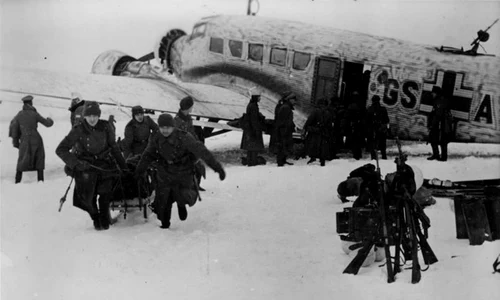
Death at the Berlin Wall
Historians have yet to establish precisely how many people died trying to escape from East Berlin over the Wall. Officials from the famous Checkpoint Charlie Museum say there have been at least 200 victims, while another research center in Potsdam has confirmed only 136 deaths.
Because the defense system surrounding the Wall wasn’t enough to stop people from trying to escape, East-German authorities granted border soldiers the right to use fire arms whenever they detected escape attempts. Through an order dated October 1973, soldiers were told that people trying to cross the wall were criminals and that they must be shot;according to the order, soldiers also had the right and even the obligation to use fire arms on women and children, and they weren’t required to use warning shots.
The first deaths
Between 1961 and 1989, 90 people were shot and killed trying to cross the Berlin Wall. Soldiers lost the right to use fire arms in case of escape attempts only in April 1989, 7 months before the Fall.
The first person who died trying to cross the Wall into West Berlin was Ida Siekmann, aged 58. She lived in an apartment in East Berlin, but – according to official city documents – the street and the sidewalk in front of her building belonged to West Berlin. So, in theory, people could walk through the front door of their East Berlin building right into West Berlin. This is why East German authorities decided to close all these exits. However, in the first days after the Wall’s construction began, people would simply jump out of the windows onto the streets or use ropes to come down the window, helped by Western policemen and firefighters. Ida Siekmann, whose family lived in West Berlin, jumped out of the window from her 3rdfloor apartment, but the firefighters below were unable to catch her with the safety net. The woman died from internal injuries.

The first person to be shot trying to cross the wall was young Günter Litfin, aged 24. He tried to swim across the Spree canal into West Berlin on August 24th, 1961, and was shot by border soldiers. It was that same day that soldiers had received orders to shoot anyone trying to cross the border.
The Peter Fechter case
If anyone was hurt during an escape attempt but got stuck on the Eastern side of the Wall, people from the West had no means of helping them. Western authorities couldn’t intervene in any form, in order to avoid a diplomatic conflict with the GDR, so they found themselves forced to watch how people were shot and left to die by the Wall. This was the famous case of young Peter Fechter, aged 18, who was shot and left to bleed to death right by the Wall, under the eyes of Western media, on August 17th1962.
A year after the Wall was build, Peter Fechter and his friend Helmut Kulbeik decided to escape and seek a better life for themselves on the other side of the Wall. The two were dissatisfied with the political situation in East Germany and dreamt of a better life. According to the plan, they were to hide in a workshop close to the Wall and, from there, jump out of the windows into the so-called ’death zone’ right in front of the Wall, run across it and climb the Wall.
Unfortunately, the two boys were seen by soldiers, who started firing at them. Kulbeik managed to climb the wall in time and find safety, but Peter Fechter was too slow. Kulbeik would later tell that Peter simply froze the moment the soldiers started firing their weapons. He was shot in the pelvic area and he collapsed by the Wall. Fechter cried for help, but the East German soldiers did nothing. Western policemen tried to help him and threw some bandages over the Wall;however, they didn’t risk climbing to wall to help Peter. Fechter died from his injuries an hour later and it was only then that soldiers came to move him.
The photos taken by Western journalists, with Fechter bleeding by the Wall, became a symbol of communist brutality

According to West German police reports, soldiers started firing with no warning, and Peter Fechter took more than one bullet. On the other side of the Wall, East German authorities decided to take measures after the Fechter case, and instructed the soldiers to move injured escapees immediately, so as to ’not provoke the enemy’. In fact, the GDR’s main problem was the Western media campaign surrounding the disturbing images of Fechter bleeding to death by the Wall.
East German reports say that the soldiers were delayed in their efforts to help and move Fechter by the Western policemen, journalists and cameramen. Head of propaganda Karl-Eduard von Schnitzler also declared that the soldiers’ brutality benefited the state, because their lives – which were more valuable than the live of a simple delinquent – would’ve been endangered by the western authorities.
In June 1990, Peter Fechter’s sister started a trial against the soldiers who had shot her brother. Six years later, two of them (the third had already died), Rolf Friedrich and Erich Schreiber, admitted their guilt and were convicted of manslaughter to 20-21 months in prison, with the possibility of parole. Due to inconclusive evidence, prosecutors couldn’t determine which of three soldiers fired the bullet that eventually Peter Fechter.
Sources:
http://www.berliner-mauer-gedenkstaette.de
















